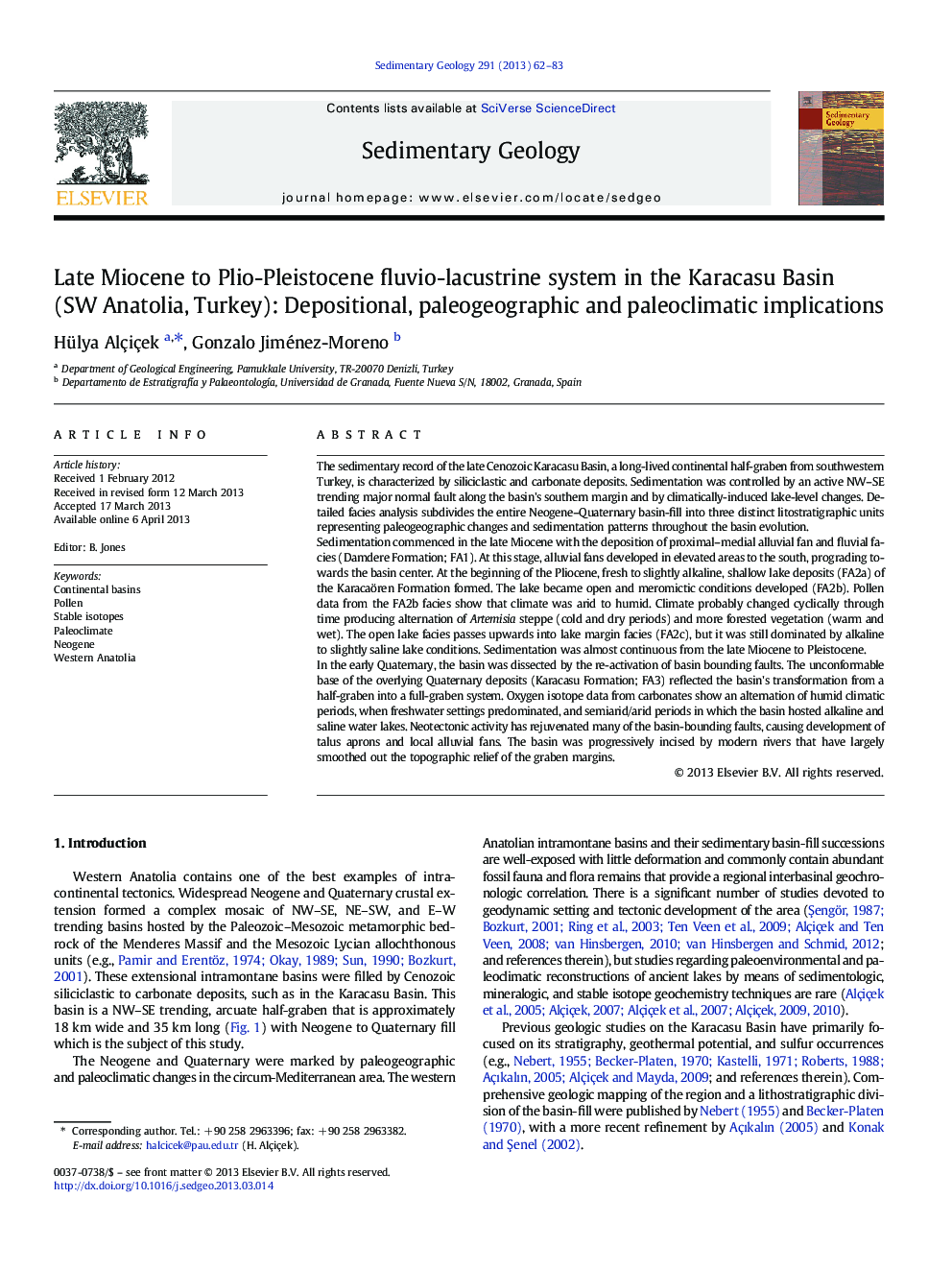| Article ID | Journal | Published Year | Pages | File Type |
|---|---|---|---|---|
| 4689563 | Sedimentary Geology | 2013 | 22 Pages |
Abstract
In the early Quaternary, the basin was dissected by the re-activation of basin bounding faults. The unconformable base of the overlying Quaternary deposits (Karacasu Formation; FA3) reflected the basin's transformation from a half-graben into a full-graben system. Oxygen isotope data from carbonates show an alternation of humid climatic periods, when freshwater settings predominated, and semiarid/arid periods in which the basin hosted alkaline and saline water lakes. Neotectonic activity has rejuvenated many of the basin-bounding faults, causing development of talus aprons and local alluvial fans. The basin was progressively incised by modern rivers that have largely smoothed out the topographic relief of the graben margins.
Related Topics
Physical Sciences and Engineering
Earth and Planetary Sciences
Earth-Surface Processes
Authors
Hülya Alçiçek, Gonzalo Jiménez-Moreno,
